How to buy a proper pair of running shoes: What you need to know from foot type to shopping online
Don't just look at the brand, price and colour combination. Take this checklist with you on your next shopping trip for running shoes.
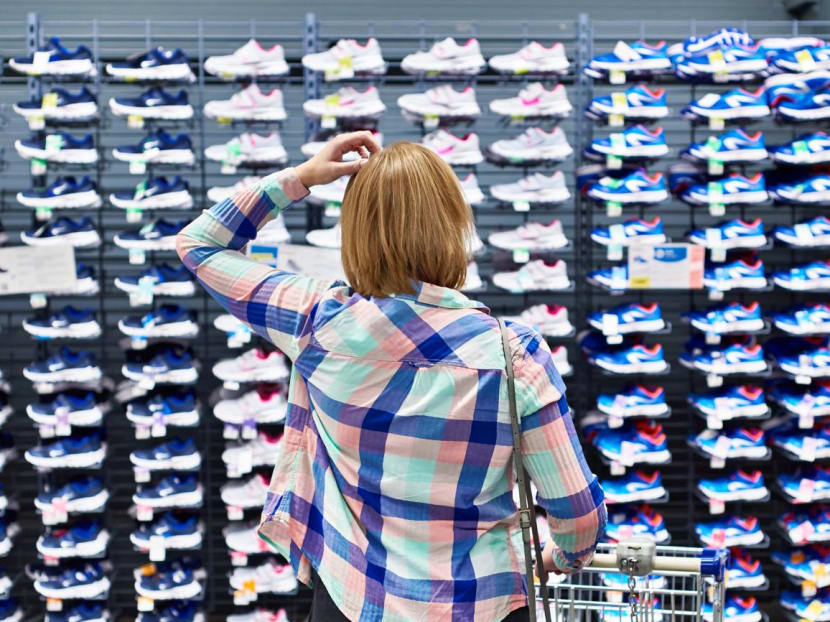
(Photo: iStock/sergeyryzhov)
You walk into a sports shoe store and immediately feel overwhelmed by the options on display. You see words such as “stability” or “motion control” on the description tag, and wonder: Shouldn’t all footwear (maybe with the exception of stilettos) ensure sure-footedness? And why would you want a running shoe that controls your motion?
Other than enquiring about the latest models, you’d probably base your selection on price and the shoes' overall aesthetics. While practical, those aren’t the parameters podiatrists would go with because you aren’t buying shoes to up your street or style cred (unless you are).
But if you're looking at a pair for more functional reasons, these are what you should be looking for instead when shoe shopping.
KNOW YOUR FOOT TYPE
Most people would fall under one of these three foot types: Low arch (flat feet); medium arch (neutral); or high arch, said Radiance Fong, a senior podiatrist with SingHealth Polyclinics – Tampines. This is determined by assessing the shape and height of the arch that runs along the inside of the foot.
Having said that, “it is important to understand that there is no perfect arch height or ideal foot type”, she said. “Individuals who do not have a neutral foot type or medium arch should not be considered as having ‘abnormal’ feet.”
You can figure out what foot type you have by observing your foot’s arch while you’re standing, said Fong. Here’s a breakdown:
- Low arch: The arch is very low and close to making ground contact.
- Neutral arch: The arch is not excessively high or low.
- High arch: The arch is high, making the inside of the foot appear hollow.
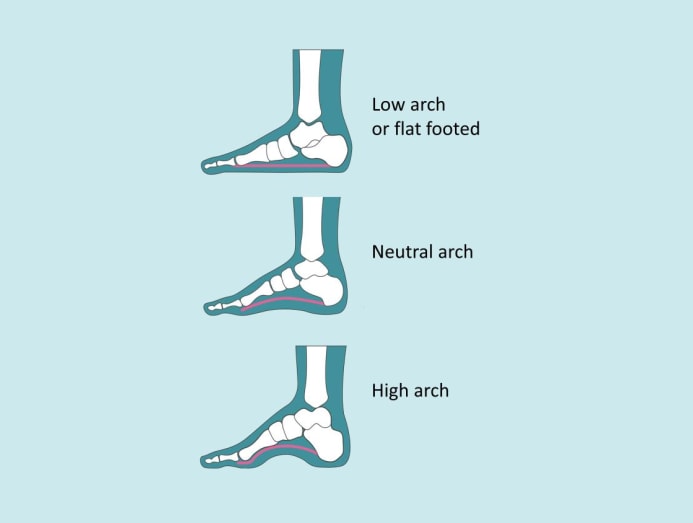
FOOT TYPES AND INJURIES YOU MAY BE PRONE TO
Your feet pronate as you walk or run, meaning they naturally roll inwards to absorb the shock from contacting the ground, explained Fong. Here’s how your foot type may determine your feet’s “behaviour” when you’re walking or running:
- Low arch: Feet tend to over-pronate or roll inwards excessively.
- Neutral arch: Feet roll inward about 15 per cent to allow proper alignment of the ankles and legs, according to Healthline.
- High arch: Feet roll outwards (supination) and place pressure on the outer toes.
Individuals with low-arched or flat feet tend to have more pronounced pronation and because of this, they are “frequently linked to a higher risk of lower limb injuries” such as shin splints and knee pain, said Fong.
But it doesn’t happen to everyone who over-pronates and “some may not experience any foot problems” at all, she added. So instead of focusing solely on foot type, podiatrists also take into consideration risk factors that may increase stress on the lower limbs, she said.
For instance, if you’ve recently started guilt-jogging after months of living a sedentary lifestyle, the sudden increase in activity may result in lower limb injuries.
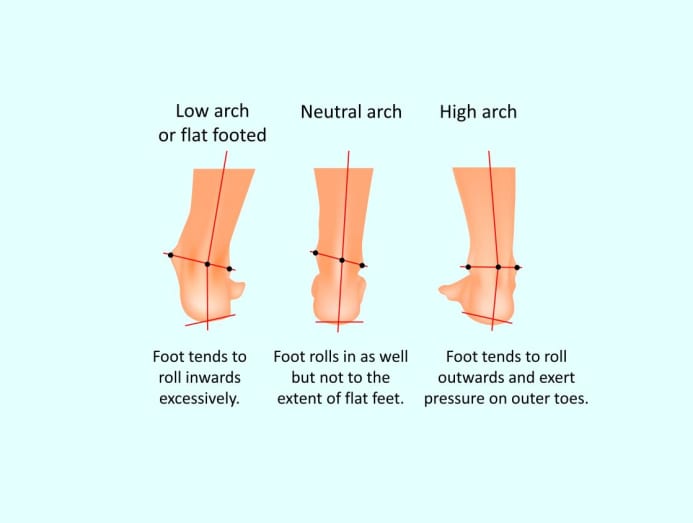
WHAT YOU SHOULD LOOK FOR
Remember the words “stability” and “motion control” you saw in the shoe store? They refer to excessive pronation. “Stability or motion control shoes tend to be offered to customers with excessive pronation (foot rolling inwards),” said Fong. “For those with excessive supination (foot rolling outwards), cushioning shoes will typically be suggested.” Got average or “normal” arches? You should be fine getting neutral shoes, she said.
Those guidelines are, of course, not fixed in stone. “Current research suggests that personal comfort should be the main deciding factor when it comes to selecting running shoes,” said Fong. “As the body has its own unique optimal movement pattern, a pair of shoes that is comfortable for someone with flat feet may not always work for another.”
Moreover, your foot changes “as a result of bony and soft tissue changes occurring from ageing, injury, pregnancy and prolonged mechanical strain”, said Fong. “These changes can increase your foot length, width and volume, and may affect shoe sizes over time.”
To find the best fit, test-run the shoes in the store (many specialised running shoe retailers have treadmills that you can run on). This is important as your feet would usually swell slightly while running, said Kwok Siew Keong, the president of the Podiatry Association (Singapore) and principal podiatrist at Physio and Sole Clinic.
“To accommodate this expansion, always check and ensure there is about one thumb's width between your longest toe and the front of the toe box,” he said. “The toe box should also be wide enough to accommodate the width of your toes and forefoot.” All of this should be done with socks on to ensure an accurate fit, he said.

It is also common to have feet of different sizes. “We should always purchase shoes to fit our larger foot,” advised Kwok. Here are other points to take note of when you’re putting the shoes through the paces on the treadmill:
Upper: This refers to the entire part of the shoe above the sole that covers your foot. Running shoes typically have uppers that are made of breathable mesh for better ventilation. “The softer materials can also reduce the risk of skin abrasions or blistering,” said Kwok.
Heel counter: It cups and supports your heel when you’re moving, so it has to be fairly firm and not collapse easily when you squeeze it, said Kwok.
Heel collar: “While the heel counter may be sturdy, the inner lining of the heel collar should be made of a comfortable material and not cause skin abrasions,” said Kwok.
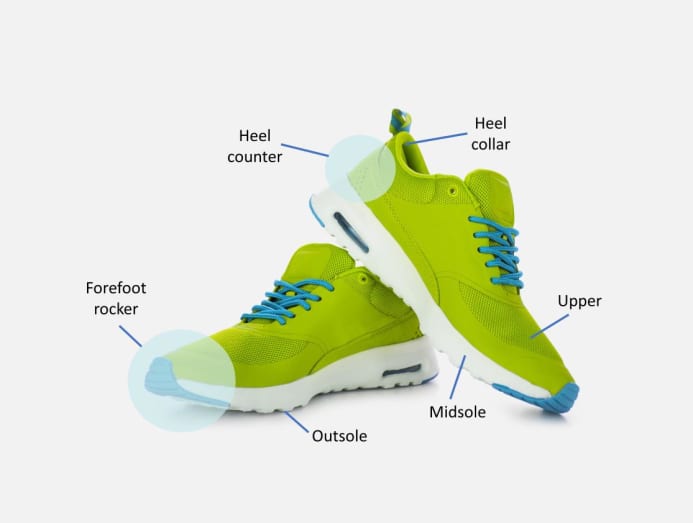
Torsional control: This refers to a shoe’s ability to rotate along the axis between the heel and toe box, said Kwok. “A shoe with good torsional control should have some resistance when you twist it while holding the heel counter and toe box.” If the shoe twists very easily, it would not “provide support to the arches while running”.
Forefoot rocker: This is the shoe’s front portion that curves upwards. It should only be flexible “at where the toes would usually bend”, said Kwok, as it “helps a runner propel forward and place less pressure onto the forefoot”.
Midsole: This refers to the impact-absorbing material in the sole. “Different brands of sports shoes use different midsole cushioning materials, so try out the various shoes to see which ones provide the greatest comfort for you while walking or running,” said Kwok.
Outsole: This is the part of the sole that contacts the ground. It should provide good traction and prevent slipping on wet surfaces, said Kwok.
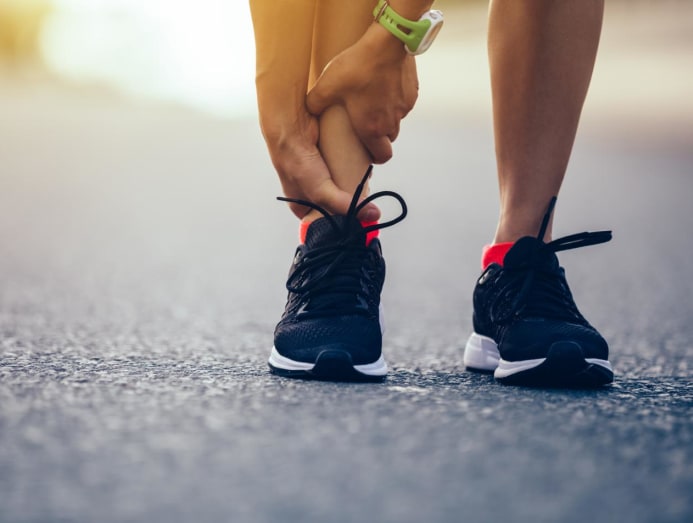
IF YOU HAVE EXISTING INJURIES
Certain shoe features can be recommended to reduce irritation to the affected area, said Fong. “For example, runners who have a bony enlargement on the back of the heel called Haglund’s deformity, or sensitivity where the Achilles tendon inserts into the heel bone, may want to avoid a stiff heel counter.
The same goes for existing injuries. The podiatrist may include features to look for to “alter the loading and reduce stress on the injured structures”, said Fong. It could involving changing the heel-to-toe drop – the difference in height between the running shoe’s heel and forefoot, and is usually measured in millimetres. If you suffer from knee pain, “you may want to consider a shoe with a low heel-to-toe drop”, suggested Fong.
Meanwhile, a runner with Achilles tendon and calf pain may want to consider a higher heel-to-toe drop to reduce loading in those areas, she said.
SHOULD YOU SHOP ONLINE FOR RUNNING SHOES?
Nothing beats trying on the shoes in person. Here’s a tip you probably already use when shopping online: Try on the shoes in the store to get the size you need first. This is especially so if you have asymmetrical feet and/or structural deformities such as a bunion or hammer toes, said Fong.
If you can’t get down to the store, here’s what you can do to have a better assessment of your size, suggested Fong:
- Stand on a piece of paper and ask someone to trace the outline of your foot. Make sure to hold the pen as vertical as possible against the paper on the floor. Do this in the late afternoon or evening when your feet are at their largest.
- To determine the length of the shoe you need, measure the length of the outline from the heel to the tip of the longest toe; then add a thumb’s width to accommodate slight foot swelling and movement.
- To determine the width measurement, simply measure the width between the widest points of your forefoot.
- Make sure you obtain measurements for both feet as they may not be asymmetrical in size. Use the measurements of the larger foot when comparing against the shoe website’s size chart.









